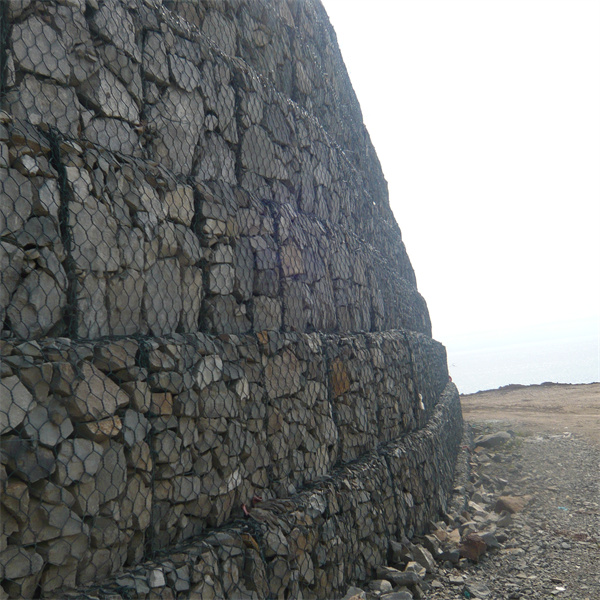Nov . 06, 2024 21:10 Back to list
Selecting the Best Materials for Constructing Gabion Walls in Landscaping Projects
Gabion Wall Materials A Comprehensive Overview
Gabion walls are increasingly popular in landscape architecture and civil engineering due to their versatility, aesthetics, and functionality. These structures are essentially wire mesh cages filled with rocks, soil, or other materials, forming a sturdy retaining wall or embankment. Understanding the materials used in gabion walls is vital for effectively designing and constructing these structures.
The Essential Elements of Gabion Walls
1. Wire Mesh Cages The primary component of any gabion wall is the wire mesh which forms the cage. High-quality wire mesh is typically made of galvanized steel or stainless steel. Galvanized steel is coated with a layer of zinc to protect against corrosion, while stainless steel offers superior resistance to rust and atmospheric conditions. The ideal choice of wire material largely depends on the desired durability and the environment where the gabion wall will be installed.
2. Filling Materials The filler material inside the gabion cages is crucial, not only for structural integrity but also for aesthetic appeal. Common filling materials include
- Natural Stone This is the most traditional and widely used filler for gabions. Natural stones come in various sizes and types, including granite, limestone, and basalt. The use of natural stone can create a pleasing aesthetic that blends well with the surrounding landscape while ensuring high durability and weight, ideal for retaining structures.
- Recycled Concrete Sustainable construction practices have led to the increased use of recycled concrete as a filler material. Crushed concrete can provide both structural support and a unique appearance. Its utilization not only reduces waste but also brings down project costs.
- Boulders and Rocks Larger boulders can also be used in gabion walls, offering enhanced stability. The selection of rock types and sizes should be based on the specific design requirements and local availability.
- Soil and Vegetative Materials In some applications, particularly in bioengineering, soil and vegetation may be used as filler materials. These allow for vegetation growth directly through the gabions, promoting soil health and enhancing the ecological value of the installation.
3. Geotextiles In specific applications, geotextiles may be included to prevent soil erosion and enhance drainage within the gabion wall. These permeable fabrics help maintain the integrity of the structure while allowing water to flow through, reducing hydrostatic pressure that might otherwise weaken the wall.
gabion wall materials

4. Accessories and Reinforcements Depending on the design and anticipated load conditions, additional accessories may be necessary. These include connectors or ties made from the same material as the wire mesh to secure the structure's integrity.
Advantages of Gabion Wall Materials
The selection of materials for gabion walls provides numerous benefits
- Durability Gabion walls constructed with high-quality materials can withstand harsh weather conditions, heavy loads, and soil movements, making them suitable for a variety of applications.
- Cost-Effectiveness Many of the materials used, especially when opting for local and recycled options, can be more affordable compared to traditional masonry walls.
- Environmental Integration Gabion walls can blend seamlessly into natural settings, promoting aesthetic appeal while providing ecological benefits, such as wildlife habitats and improved soil conditions.
- Ease of Construction Gabion walls can often be constructed quickly on-site, requiring minimal machinery and labor, particularly if local materials are used.
Conclusion
Selecting the right materials for gabion walls is critical to ensuring their effectiveness, durability, and beauty. With options ranging from traditional natural stone to innovative recycled materials, the flexibility in design and construction makes gabion walls an attractive choice for modern landscape and civil engineering projects. As sustainability continues to be a driving force in construction practices, gabion walls are poised to maintain their relevance and popularity in years to come. By understanding and utilizing the various materials available, builders can create structures that not only meet functional needs but also enhance the natural environment.
-
Visualizing Gabion 3D Integration in Urban Landscapes with Rendering
NewsJul.23,2025
-
The Design and Sustainability of Gabion Wire Mesh Panels
NewsJul.23,2025
-
The Acoustic Performance of Gabion Sound Barriers in Urban Environments
NewsJul.23,2025
-
Mastering the Installation of Galvanized Gabion Structures
NewsJul.23,2025
-
Gabion Boxes: Pioneering Sustainable Infrastructure Across the Globe
NewsJul.23,2025
-
Custom PVC Coated Gabion Boxes for Aesthetic Excellence
NewsJul.23,2025
-
Installation Tips for Gabion Wire Baskets in Erosion Control Projects
NewsJul.21,2025






